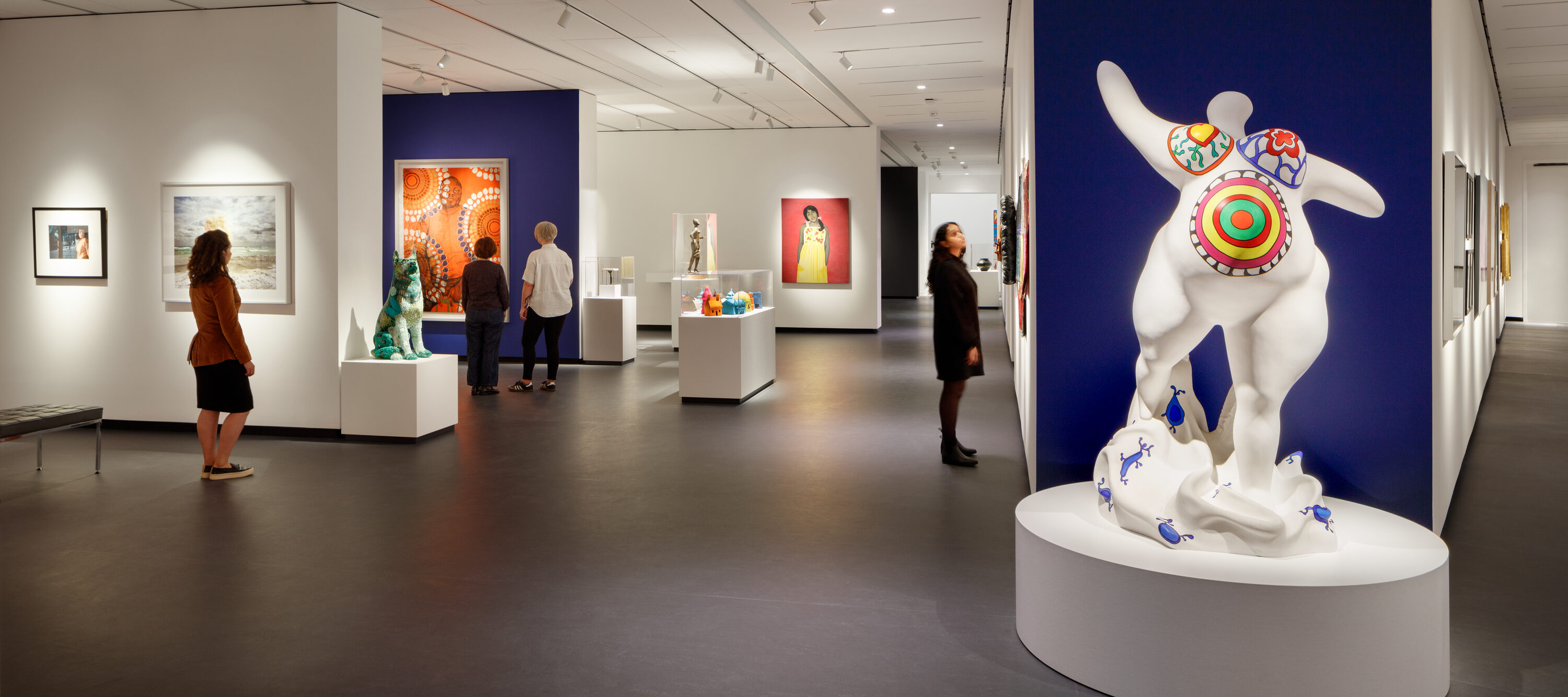At the angle of New York Ave. and H St. NW in Washington DC stands a 1908 landmark that was built as a Masonic Temple. In that capacity, women were not permitted to enter the building.
Today, that same building is all about women — although men are more than welcome! Refurbished in accordance with the highest museum design standards, it houses the National Museum of Women in the Arts — the first museum in the world dedicated to championing women artists. The museum recently reopened, having undergone a two-year $70 million renovation.
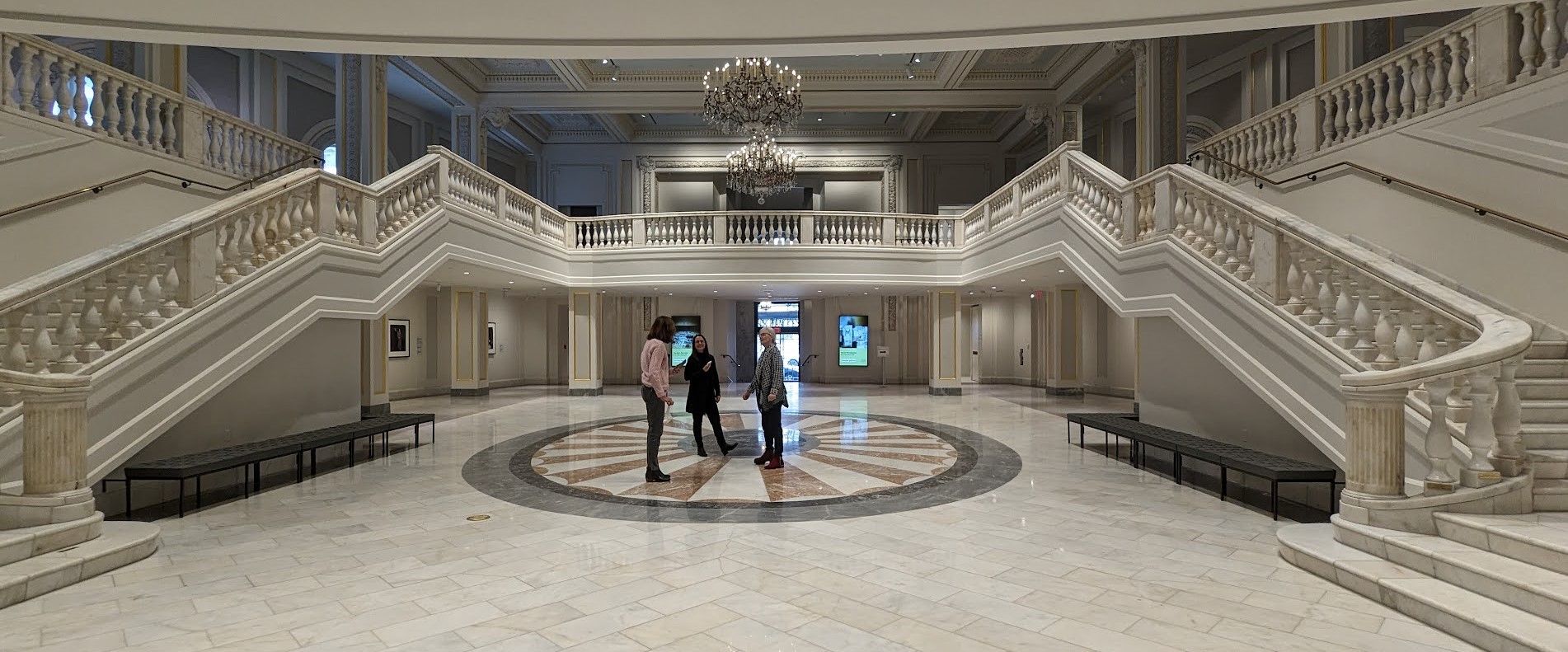
While American museums are actively broadening the diversity of their collections, still just 11% of all acquisitions at 31 prominent US art museums over the past decade have been of work by women artists. That makes sense for pre-modern artwork since, up until only about a century ago, the vast majority of art was produced by men. But things took a turn in the 20th century and now the merit of work accomplished by women artists — both dead and very much alive — is acknowledged throughout the art world.
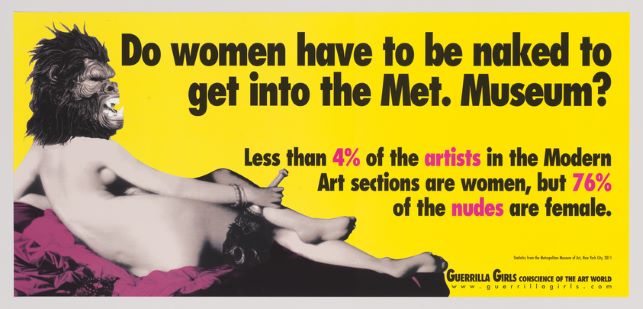
The founders of the NMWA, Wilhelmina Cole Holladay and Wallace F. Holladay, began collecting art in the 1970s, just as scholars and art historians were beginning to discuss the underrepresentation of art by women and various racial and ethnic groups in museums. Pioneering this revisionist approach to collecting, the Holladays committed themselves to assembling art by women, spurred by the realization that historical and contemporary women artists were not being given their due. By 1980, Wilhelmina Cole Holladay began to devote her energies and resources to creating a museum that would showcase women artists, and the Holladay Collection became the core of the NMWA holdings.
My companion was initially trepidatious. Would he to have to endure a lot of politicized man-bashing? He expects the news to raise his blood pressure, but he expects art to raise his spirits. As it turned out, we were both pleased to find that the curatorial voice is not strident. He felt as welcome and engaged as he had the day before at the National Gallery.
Fourth Floor, Exhibition Galleries
We started at the top, working our way down from the 4th floor galleries, and right from the get-go it was clear that this is a museum of temporal and stylistic range. Stepping from the elevator we were met with a small exhibition of the work of Hung Liu (1948-2021) — a woman who grew up in Mao Zedong’s Cultural Revolution in China, where she labored in the fields and trained as a painter before immigrating to CA in 1984. Hung Liu: Making History (on through Oct 20, 2024) shows how her distinctive approach — referencing historical photographs of female Chinese laborers, refugees and sex workers — evokes remembrance of the harshness of their experience, through a veil of paint. The artist said of her subjects, “I’d like to summon their ghost spirits, to make sure they are not forgotten.”
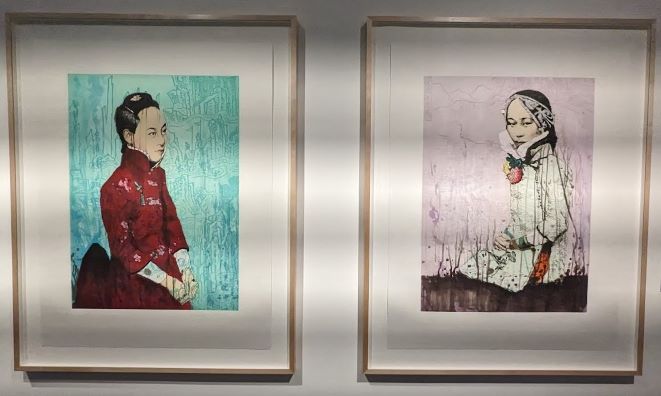
Left: Shui-Water / Right: Shan-Mountain. 2012 color aquatint etchings with gold leaf on paper 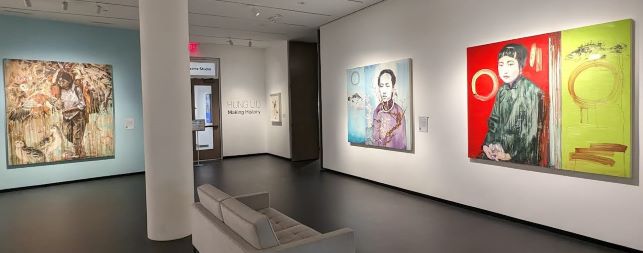
Installation view
In the next gallery — moving from the 20th- back to the 17th-century — placed in a line along the blue walls of three adjacent alcoves, a series of prints by artist Antoinette Bouzonnet-Stella (1641 to 1676), depicts The Entrance of the Emperor Sigismond into Mantua (1675). The 25 relief-style engravings on paper teem with horses and oxen pulling wagons, children and women following men brandishing spears, musicians and soldiers traveling in the entourage of the Emperor. The lively and exacting detail in the engravings is quite astonishing.

Impressive: Antoinette Bouzonnet-Stella, Installation view
The exhibition, titled Impressive: Antoinette Bouzonnet-Stella (on through Oct 20, 2024), explores the circumstances of the creation of the series, and focuses on the artist’s life in Paris working alongside her uncle, artist Jacques Stella, in his prestigious lodgings in the Louvre. The imagery of this series of prints is taken from a 14th-century Italian Renaissance stucco frieze designed by Giulio Romano for the Palazzo del Te in Mantua, which itself had been modelled on the 2nd-century style of Trajan’s Column in Rome. This commission — which became Bouzonnet-Stella’s signature work, was part of a large-scale effort by the French government to emulate Classical Greek and Roman sculpture in French art.
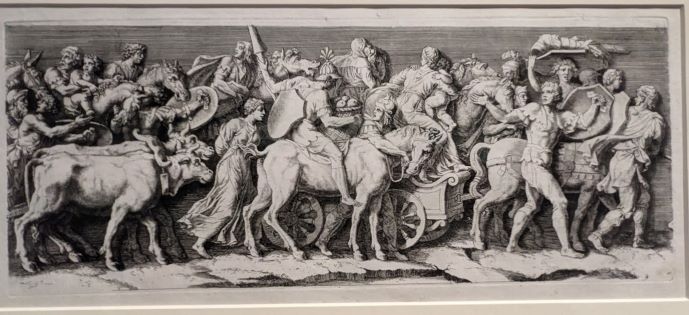
For more about the artist and her work, read our blog piece, Have You Met Antoinette Bouzonnet-Stella?
Third Floor, Permanent Collection
With a collection of more than 6,000 works dating from the 16th century to today, created by more than 1,500 artists, only a small portion of NMWA holdings can be on display at any given time. From now until October 2025, the presentation, Remix: The Collection (on through Oct 21, 2025), emphasizes connections between historical and contemporary art, with artworks grouped around themes — in some cases anchored by a medium and in others by an idea — represented by global artists across time. Remix themes including photography, fiber works, the colors red and purple, nature, domesticity, and more.
For example, upon entering the third floor gallery, the first theme, Seeing Red, focuses on the many shades of red available to an artist, and how they are able to provoke antithetical emotional extremes. Curatorial text tells us that reds “can seduce or warn, allude to ardent love or impassioned anger, and signify both danger and good fortune. [Red] evokes our life’s blood as well as fire, a source of vital warmth but also fearsome energy. …” Seeing Red shows us a handful of artists who have exploited the color to achieve their purpose.

Alma Woodsey Thomas (1891-1978)
Orion, 1973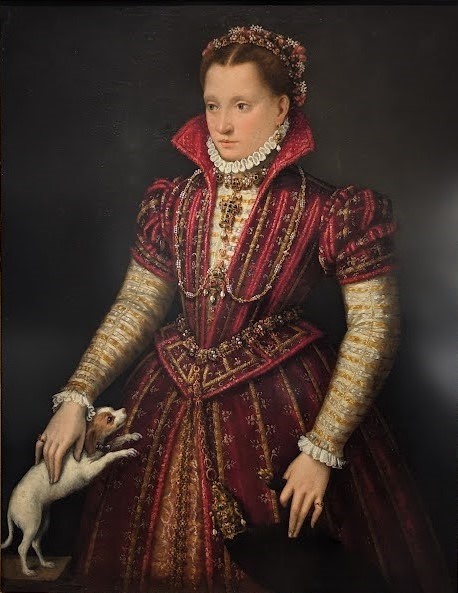
Lavinia Fontana (1552-1614)
Marriage Portrait of a Bolognese Noblewoman ca. 1589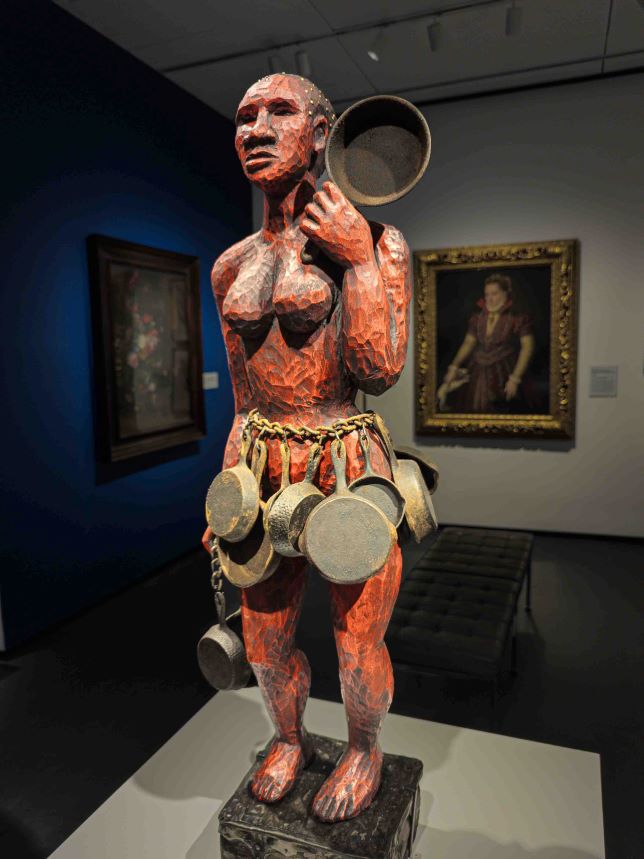
Alison Saar (b. 1956) Scorch Song, 2022
As in many of her late paintings, in Orion Alma Thomas focused on a single color. Her choice of red shades and tones evoked, for her, the power required to break from earth’s gravity. Her signature linear brushwork virtually winks at us as our eyes follow the rhythmic interplay of red and white across the canvas.
Lavinia Fontana was fortunate to be born to a father who was a painter. This allowed her to become an artist in a time when female artists were not readily accepted. It may have been financial issues that prompted Prospero Fontana to train his daughter, and when Lavinia married — instead of offering the usual dowry — she promised her betrothed that she would paint to contribute income to the family coffers. We know this is a Marriage Portrait because red was the color of 16th-century Bolognese wedding dresses, the dog represents marital fidelity, and the marten pelt in the bride’s left hand was a fertility talisman. This work illustrates her ability to render sumptuous clothing and jewels with intricate detail which, at least in part, explain her success.
Carved in rough-hewn wood, nails for hair, and encumbered with a belt of iron skillets, Alison Saar’s Scorch Song transforms found objects to reflect themes of Black cultural and spiritual legacy. Every bit a warrior woman, a skillet her weapon, exuding the organic power of tribal art, this figure is a totem, her meaning imposed by the viewer. Or perhaps she is a guardian, or maybe a nurturer? Her armor of red is a warning of impassioned purpose.
Our selection of a few of the works in the Remix: The Collection presentation shows the quality as well as diversity of mediums, eras, styles and subjects on display …
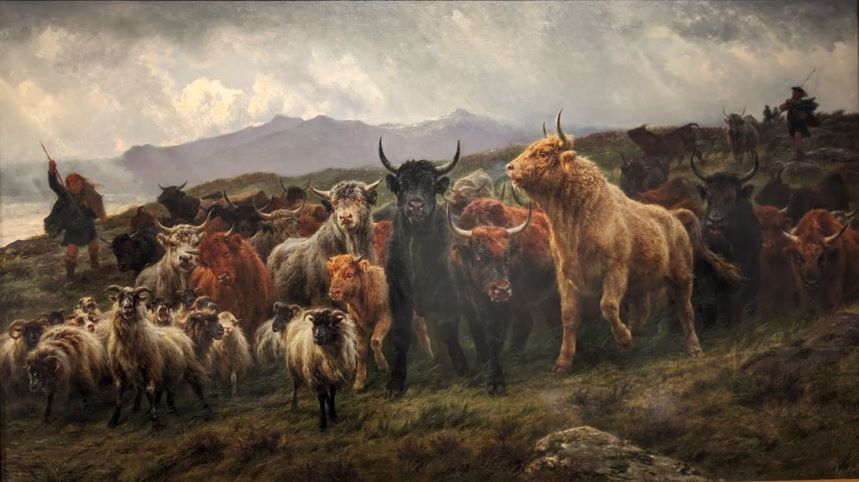
Rosa Bonheur (French, 1822-1899) Highland Raid, 1860; Oil on canvas, 51 x 84 in.

Amy Lamb, Purple Datura, 2015; Digital pigment print, 34 x 34 in 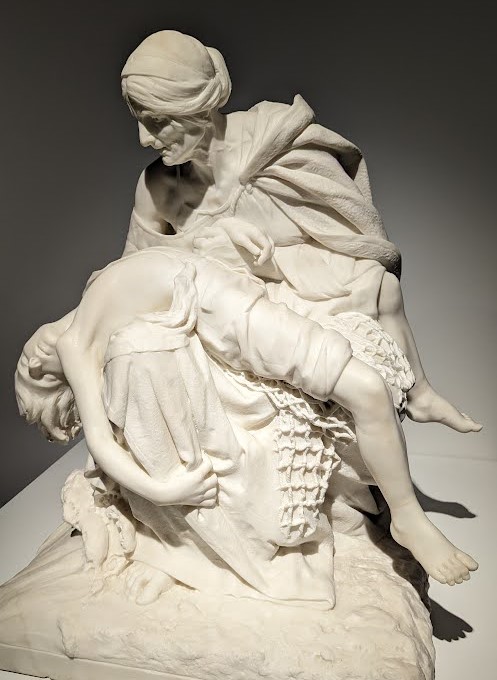
Sarah Bernhardt, Après la tempête (After the Storm), ca. 1876
White marble, 29 1/2 x 24 x 23 in.

Beverly Penn, Maelstrom, 2011, Bronze 
Chakaia Booker, Acid Rain, 2001
Rubber tires & wood, 120 x 240 x 36 in.;
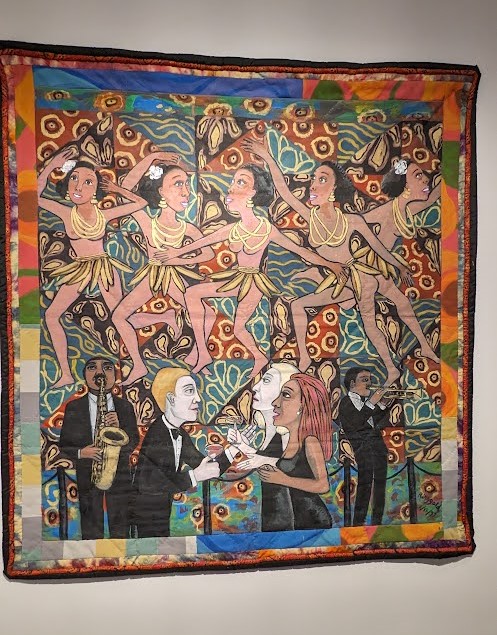
Faith Ringgold, American Collection #4: Jo Baker’s Bananas, 1997
Acrylic on canvas with pieced fabric border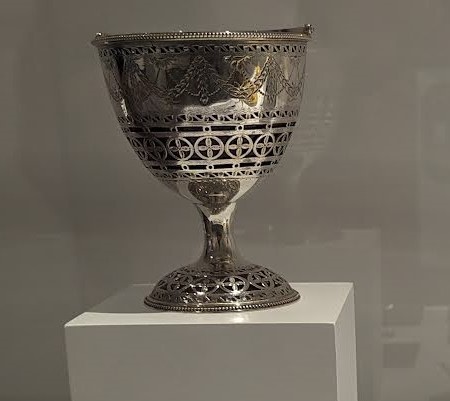
Hester Bateman, Sugar Basket, 1777, silver and glass
For me, the most conceptually vivid and irresistible piece in the show was Bullets Revisited #3, 2012, by Lalla Essaydi (Morocco, b. 1965). This large-scale shimmering set of three adjacent prints drew me in with its golden patterns and the direct gaze of the reclining woman. This hyper-detailed portrait responds to 19th-century paintings of Orientalist harem fantasies. Henna designs, which are commonly created by women, were inscribed on her body in the form of Arabic calligraphy, traditionally a male art. Here, thousands of silver and gold .22-caliber bullet casings pervade the composition, in a statement against the expansion of restrictions on women following the Arab Spring uprisings of 2010. They also symbolize a shield against Western male voyeurism and objectification of colonized women. A truly stunning work.
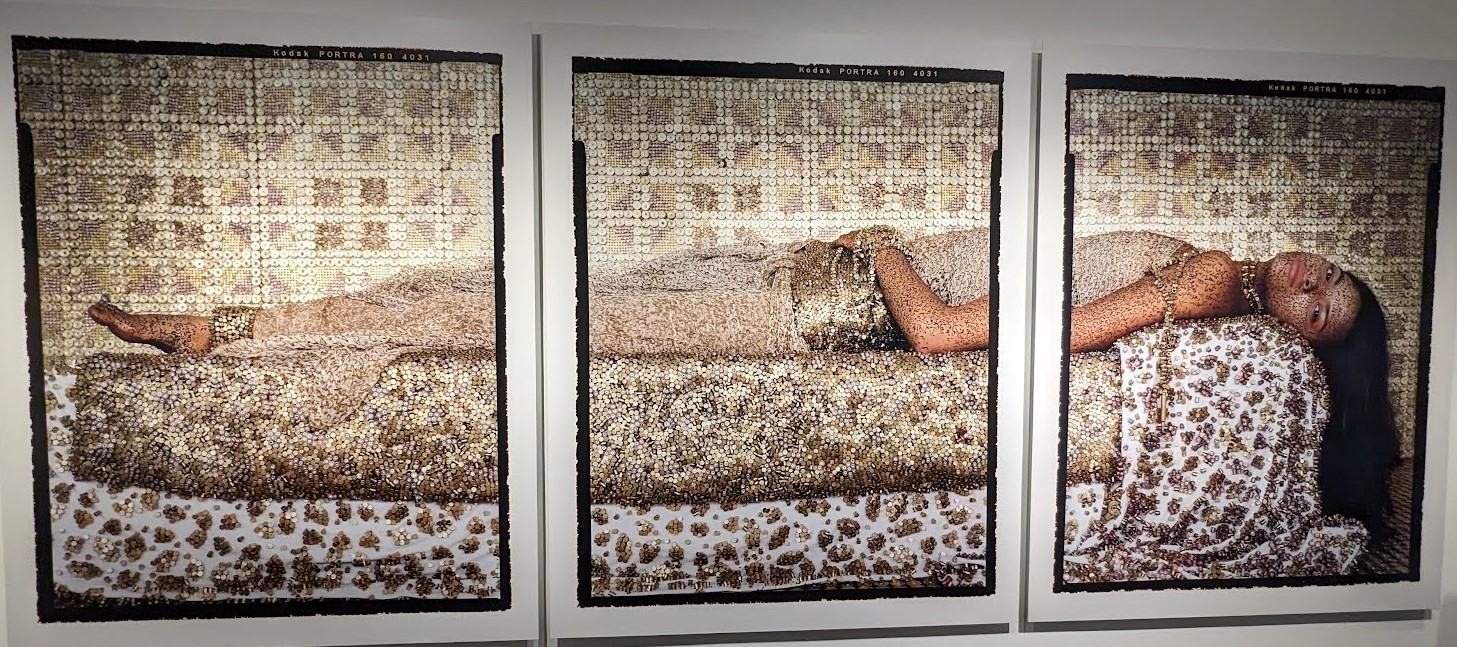
Lalla Essaydi, Bullets Revisited #3, 2012. Chromogenic prints mounted on aluminum
Second Floor, Special Exhibition Galleries
Much of the second floor was dedicated to The Sky’s the Limit (on through Feb 25, 2024), an exhibition of contemporary sculptures dangling from the ceiling, cascading down walls, extending far beyond their footprint on the gallery floor — both physically and metaphorically.
In largely process-focused works highlighting scale and materials to achieve impact, an array of creatively arranged found objects made looking a treat, searching for sparks of recognition: silver-plate, hair combs, ostrich eggs. Gallery lighting enhanced the impact with dazzling shadow effects.
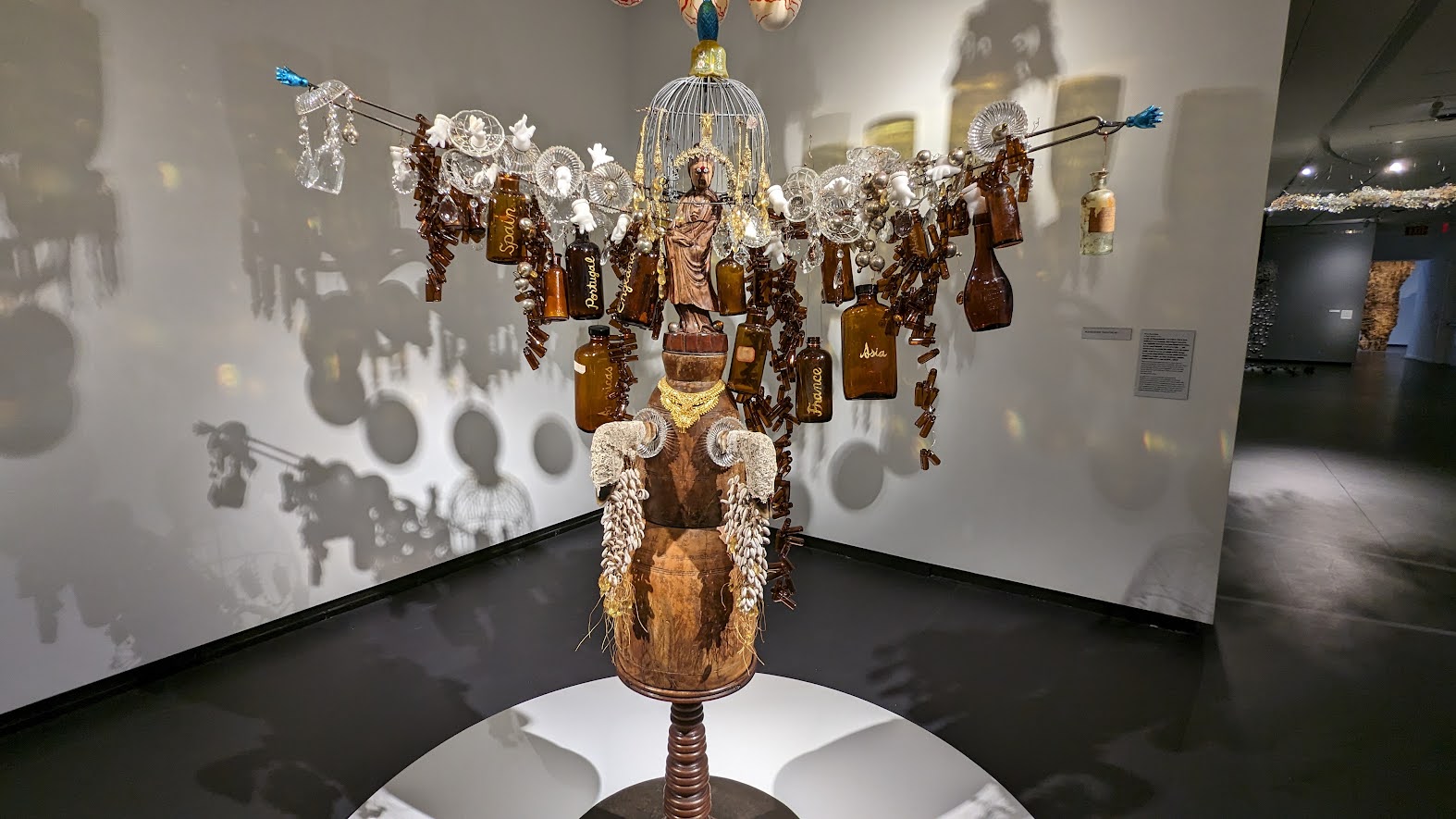
Rina Banerjee, Lady of Commerce, 2012, (detail)
Adjacent text tells us that in Lady of Commerce, Rina Banerjee contemplates containment, commodity, and exchange. Combining natural and human-made materials into a haloed figure (the halo isn’t shown in our detail image but can be seen reflected on the walls) with outstretched arms, she links psychological desire to material goods. “Freedom is the most expensive commodity, nature the most dangerous beauty,” she says.
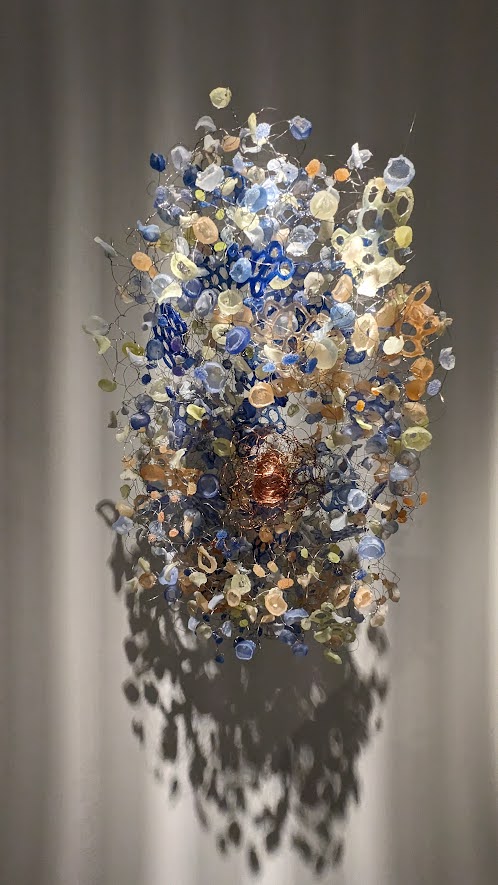
Yuriko Yamaguchi, Cloud #12, 2020 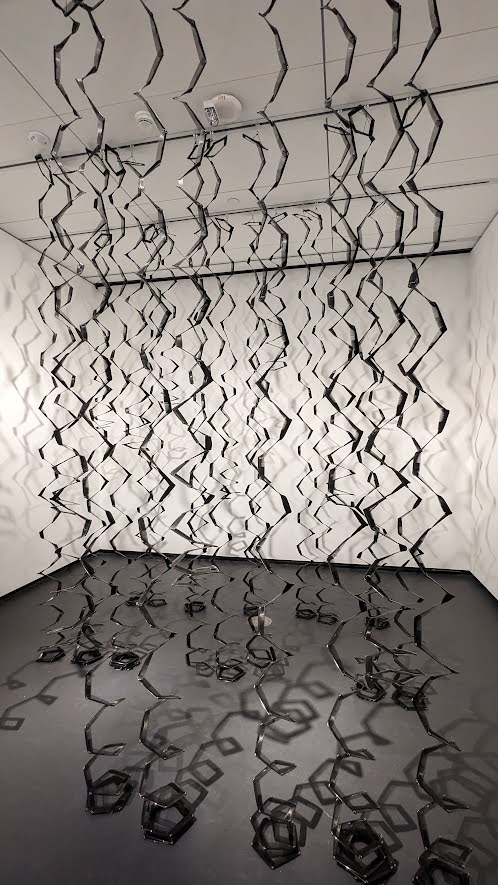
Sonya Clark, Curls, 2005. Plastic combs 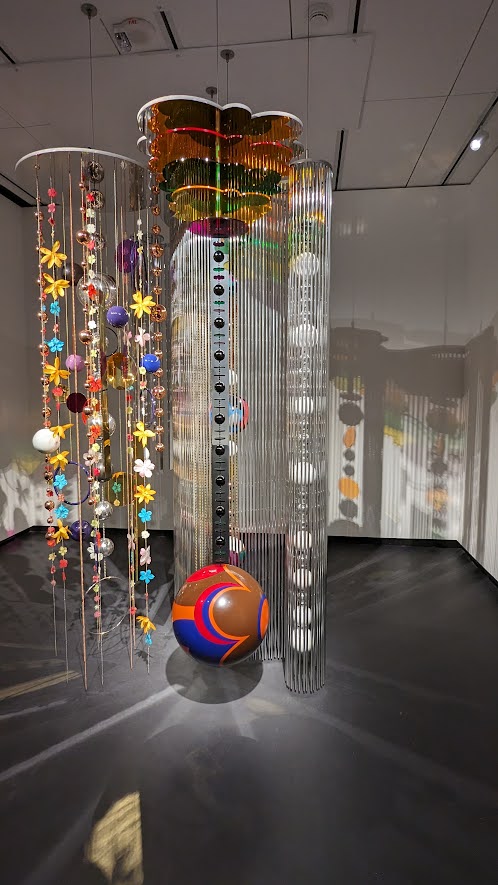
Beatriz Milhazes, Marola, 2015
The organic networks present in natural organisms inspire Yuriko Yamaguchi’s delicately entangles wire sculptures. She first constructs single parts in hand-cast resin, which she calls “cells,” before connecting them intuitively, growing the works into amorphous forms resembling swarms, hives, and clouds.
By combining simple objects like these combs, Sonya Clark creates visually and emotionally layered sculptures that address themes of history, Blackness, visibility and ancestry. In Curls, she fastened hundreds of fine-toothed plastic pocket combs — which she associates with smooth, straight tresses — ironically transforming them into colossal, cascading, tightly wound coils that resemble her own hair texture.
Beatriz Milhazes, a Brazilian artist, titled her sculpture with the Portuguese word for the ripples that follow a large wave. She is known for large-scale vivid paintings in which she interlaces stripes, flowers, waves and arabesques, and here she has translated her two-dimensional motifs into a harmony of bold shapes, weights and volumes. No surprise that it’s evocative of Brazilian carnival, for which Milhazes has partnered in the design of stages, costumes and floats.
With so many museums in Washington DC — of which many are free, being associated with the Smithsonian — it might be tempting to skip the National Museum of Women in the Arts. Dont’ do it!
The entry fee is reasonable (Adult $16 / Adult 70+ $13). This art geek thinks it’s well worth it!
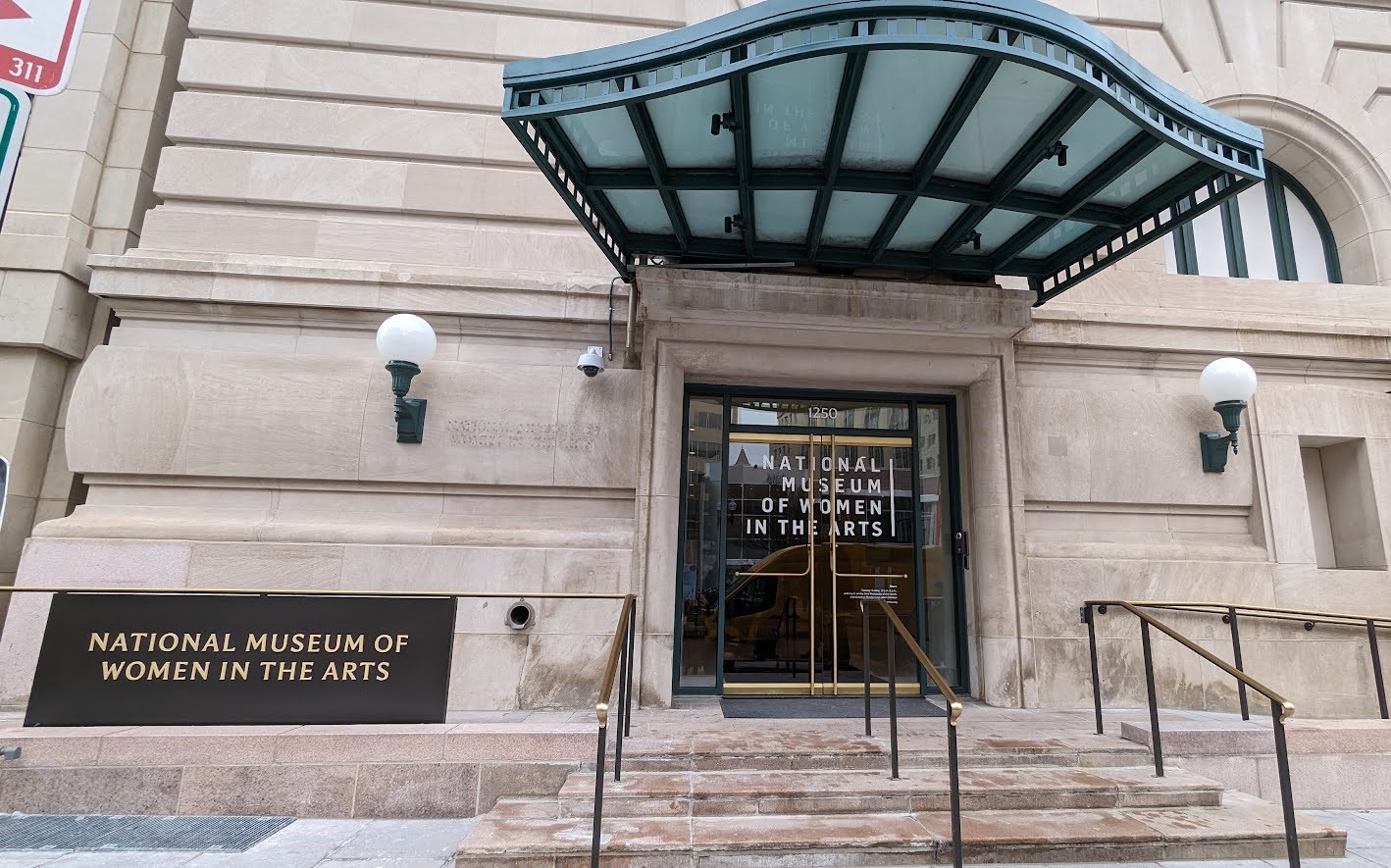
In a Nov 22, 2023 broadcast, PBS News Hour’s Jeffrey Brown wondered if “a museum dedicated to women’s art is still needed, as it might have been in the 1980s, when the art collective Guerrilla Girls were creating their direct-confrontation advocacy art?” Sure, the balance is leveling, but when you consider that only 15% of exhibitions from 2008 to 2020 were of work by women at the same 30 museums noted above, we’re apparently not there yet.
And where is “there”, anyway? Specialty art museums abound throughout the nation. Why not one that specializes in work created by women? Especially one that is as well-conceived, well-designed and well-curated as the National Museum for Women in the Arts.
ArtGeek highly recommends this musuem.
Hmmm … maybe it’s time to plan a little trip …
National Museum of Women in the Arts
1250 New York Ave NW, Washington, DC
202-783-5000
Art Things Considered is an art and travel blog for art geeks, brought to you by ArtGeek.art — the only search engine that makes it easy to discover almost 1700 art museums, historic houses & artist studios, and sculpture & botanical gardens across the US.
Just go to ArtGeek.art and enter the name of a city or state to see a complete interactive catalog of museums in the area. All in one place: descriptions, locations and links.
Use ArtGeek to plan trips and to discover hidden gem museums wherever you are or wherever you go in the US. It’s free, and it’s easy and fun to use!
© Arts Advantage Publishing, 2024
